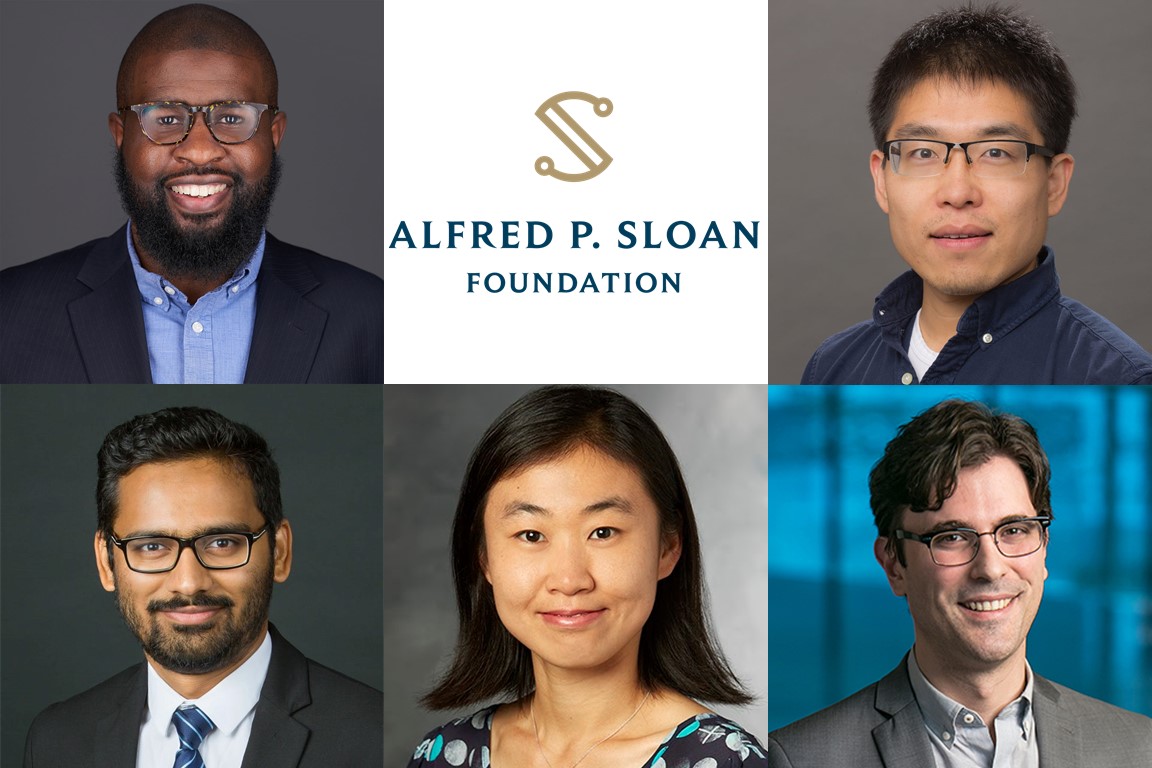
Published by Penn Today
Authored by Erica K. Brockmeier
Ishmail Abdus-Saboor and Bo Zhen from the School of Arts & Sciences, Bhaswar B. Bhattacharya from the Wharton School, Ziyue Gao from the Perelman School of Medicine, and Marc Miskin from the School of Engineering and Applied Science are among the 128 recipients of the 2021 Sloan Research Fellowship. As one of the most prestigious awards available to young researchers, the Fellowship recognizes early-career scholars in the United States and Canada. Each recipient will receive a two-year, $75,000 Fellowship for their research.
Abdus-Saboor is the Mitchell J. and Margo K. Blutt Presidential Assistant Professor of Biology in the Department of Biology. Focused on the genes and nervous system pathways involved in translating tactile sensations to the brain, Abdus-Saboor has taken a particular interest in the perception of acute and chronic pain. He has previously been recognized for his pioneering work with the Rita Allen Foundation Scholar in Pain Award, the NIH Mitchell Max Award for Pain Research, an NIH Pathway to Independence Award, and a Burroughs Wellcome Fund PDEP Fellowship, among other honors.
Bhattacharya is an assistant professor in the Department of Statistics. His research interests include nonparametric statistics, network inference, combinatorial probability, and discrete and computational geometry. Working at the intersection of probability and combinatorics, Bhattacharya studies how methods from graph theory can be used to analyze large and complex datasets in a computationally efficient way. These types of methods can be used to addressing problems in natural language processing and high-dimensional data analysis.
Gao is an assistant professor in the Department of Genetics. She is investigating genetics and accumulated mutations using computational methods to better understand how mutation, demographic history, and natural selection shape genetic variation within and between populations and to use this knowledge to learn about human biology, history, and evolution. Gao’s lab is also a member of the Penn Center for Global Genomics and Health Equity.
Miskin is an assistant professor in the Department of Electrical and Systems Engineering who specializes in the design and control of microscopic robots. Miskin’s research involves adapting techniques used in the manufacture of computer chips to make tens of thousands of these robots at a time on a standard silicon wafer. Once separated, these robots can move by means of legs consisting of nanoscale strips of platinum, which flex when a current is applied. The next steps for this research involve coordinating the activity of these robots into swarms, allowing them to collectively act as an adaptable, “smart” material.
Zhen is an assistant professor in the Department of Physics and Astronomy. His research lab works at the intersection of condensed matter physics and quantum electrodynamics with an interest in developing practical application. This includes research on nanophotonics, devices with features at the nanometer-scale that imbue them with unique properties, and finding ways to reduce energy use in optical communications using energy-efficient design and developing new types of materials.
Since the first Sloan Research Fellowships in 1955, 125 faculty from Penn have received awards. These Fellows are often seen as a marker of the quality of an institution’s science faculty and proof of an institution’s success in attracting the most promising junior researchers to its ranks.
Open to scholars in eight scientific and technical fields—chemistry, computational and evolutionary molecular biology, computer science, Earth system science, economics, mathematics, neuroscience, and physics—the Sloan Research Fellowships are awarded in close coordination with the scientific community. Candidates must be nominated by their fellow scientists, and winning Fellows are selected by independent panels of senior scholars on the basis of research accomplishments, creativity, and potential to become a leader in their field.
